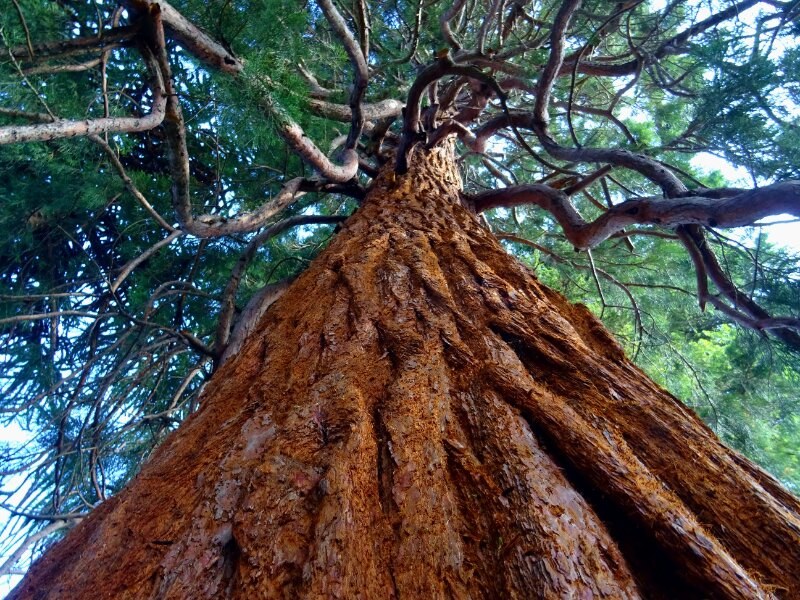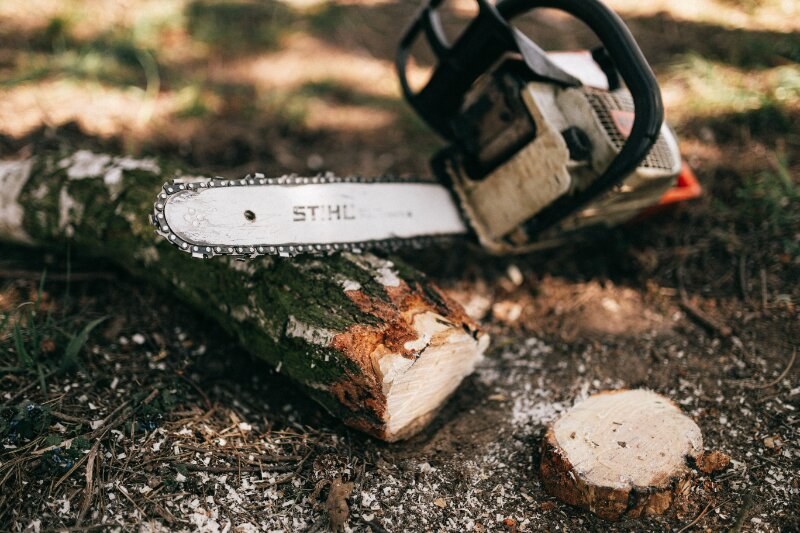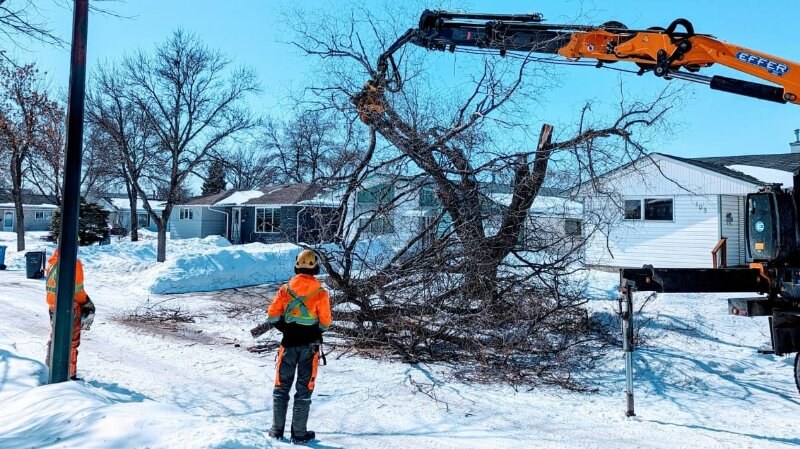What Are The Legal Aspects of Tree Removal
Reading time: 8 minutesTrees play a critical role in environmental stability, and when it comes to their removal, there are specific laws in Canada that govern what you can and cannot do. Property ownership, legal jurisdiction, and environmental impact are just a few of the multifaceted issues related to tree removal.
Below, we explore the legal frameworks for trimming or cutting City trees and how Green Drop can help keep your trees healthy and vibrant.

Understanding Tree Laws in Canada
In Canada, there are many tree laws in place that govern how and when City trees can be removed, pruned, or trimmed. These laws are based on important factors like environmental conservation and property rights and are designed to prevent trees from being removed or cut back without clearance to do so.
In most cases, removing City trees without a permit is illegal. This is because cutting down mature trees can seriously impact air quality, wildlife habitats, and other critical components of the local ecosystem.
Before a permit is issued, an assessment of the tree's health and the potential impact of its removal is conducted. A permit may not be issued if it's determined that the environmental cost of cutting down the tree is too high.
If you remove a tree without a permit and are caught, you could be fined several thousand dollars and potentially be responsible for the cost of any restoration work that needs to be performed to restore biodiversity in the area.
For example, in Toronto, cutting down a Bylaw-protected tree without permission could result in jail time and fines of up to $100,000 per tree. In Surrey, the maximum penalty is $20,000 per tree. In Calgary, the fines are between $100 and $500.
Yard Maintenance
In Calgary, it’s important to keep trees, hedges and shrubs properly trimmed so they’re not intrusive to pedestrians on the sidewalk and vehicles on the street. They should also not grow beyond 750 mm if located within a corner of a lot.

Establishing Ownership of a Tree
Generally, there are no bylaws pertaining to the management of trees on private property. This typically comes down to the property owners. So, if the debate is about who owns the tree between the two property owners, here’s what you need to know:
- Border trees are trees that are still entirely on your property
- Boundary trees are split between two different properties
You may want to consult with a land surveyor to get a clear idea of where your property ends and where your neighbours’ begin so you know which trees belong to you and which trees also belong to your neighbour.
When a Tree Becomes a Nuisance
If one or more of your neighbour’s trees have become a nuisance, you may be thinking about trimming it or cutting it down yourself. However, a diplomatic approach is crucial to avoid any potential consequences of illegally removing a tree.
Start by communicating calmly and rationally with your neighbour about your concerns and how their tree currently impacts your property. Let them know the specific issues, like leaf litter in your yard or an obstructed view of your surroundings.
Other serious issues shared trees can potentially cause include tree roots encroaching on the other owner's plumbing system and overgrown branches breaking out windows or damaging the roof during a storm.
Most of the time, a polite conversation about the issue is all that's needed to rectify the matter in a mutually satisfactory way.
If you find it challenging to discuss the matter amicably with your neighbour, you may consult a mediator or obtain legal counsel. If you can't find a common solution that both you and your neighbour agree on, you may need to take the matter to court so a judge can decide who the tree belongs to and what will happen to it.
Canada’s Self-Help Rule
If you have difficulty obtaining consent from your neighbour to trim back or cut down a tree you share, it may still be possible to do so under Canada's self-help rule.
Self-help laws state that if a neighbour's tree has become a nuisance or is causing problems for their property, owners may have the right to address the issue even without permission.
Most of the time, this covers any roots or branches encroaching on the property, not the tree itself. Property owners must also take care not to inflict unnecessary damage and to make as few changes as possible to resolve the matter. Overdoing it can easily lead to legal consequences, even if you were initially covered by the self-help law.
Loss of Privacy Claims
Not only are trees crucial parts of the environment, but they also act as privacy barriers for residential properties. If you trim or cut down a boundary tree that was providing your neighbour with privacy, they could potentially bring a claim against you for loss of privacy.
If successful, you could be ordered to pay for the cost of restoring the tree and any loss of property value that cutting the tree may have caused.
This is why getting permission ahead of time is of the utmost importance. Dealing with the consequences of illegal tree removal after the fact can be much more expensive and problematic than just working with your neighbour to find a mutually satisfactory solution.

Frequently Asked Questions (FAQs) About the Legal Aspects of Tree Removal
Is my neighbour legally responsible for damage to my property or injuries caused by their tree?
In most cases, property owners cannot be held responsible for damage caused by healthy trees. Unless the tree was visibly diseased or had noticeably broken branches, it's unreasonable to assume that the property owner should have been aware of the hazard or should have taken steps to mitigate any problems that could have occurred.
Alternatively, if the property owner has been warned that their tree poses a hazard to nearby people and property, and if the owner refuses to address the matter, it may be possible to sue them for negligence.
What protections are in place for heritage or historic trees?
Some provinces designate specific trees as historic or heritage trees. This title provides these trees with additional protections against alteration or removal without a permit. Applications for a permit to trim or cut down heritage trees are carefully scrutinized. A property owner interested in making alterations to a historic tree will need to make an exceptionally good case of why changes need to be made for safety or aesthetics.
Do tree removal regulations differ between urban and rural areas?
Urban areas have a higher population density and may have stricter regulations to preserve green spaces within the urban environment.
Alternatively, rural areas tend to offer more flexibility when it comes to removing trees that are getting in the way. However, there may be guidelines to follow in order to preserve nearby natural habitats.
Are there guidelines for planting new trees after removal?
If you want to replace a tree that has been removed, be sure to choose a native tree species that is well-adapted to the local soil conditions, climate, and ecosystem. Depending on where the tree you removed was located and what kind of tree it was, you may be able to replace it with the same variety.
Can I remove a tree by myself?
Unless the tree you want to remove is small or you have heavy equipment specifically designed for tree removal, chances are, you'll need help from a professional. Involving a tree removal service can prevent legal issues and potential mistakes, helping to make the process smoother and less eventful.
How much does a professional tree removal cost?
If you have the appropriate permit, the cost of professional tree removal depends mainly on the size and location of the tree, as well as how difficult it will be to cut down and haul away. Smaller trees may only cost a few hundred dollars to cut down, while large or wide trees may cost $2,000 or more to remove.
Is There a Nuisance Tree in Your Way? Green Drop Can Help
Is there an unwanted tree that’s causing issues on your property? Green Drop can help. We specialize in the safe and effective removal of trees according to Canadian regulations and can help ensure the integrity of your property without consequences. Connect with our ISA-certified Arborists today for a free tree removal assessment and estimate!

